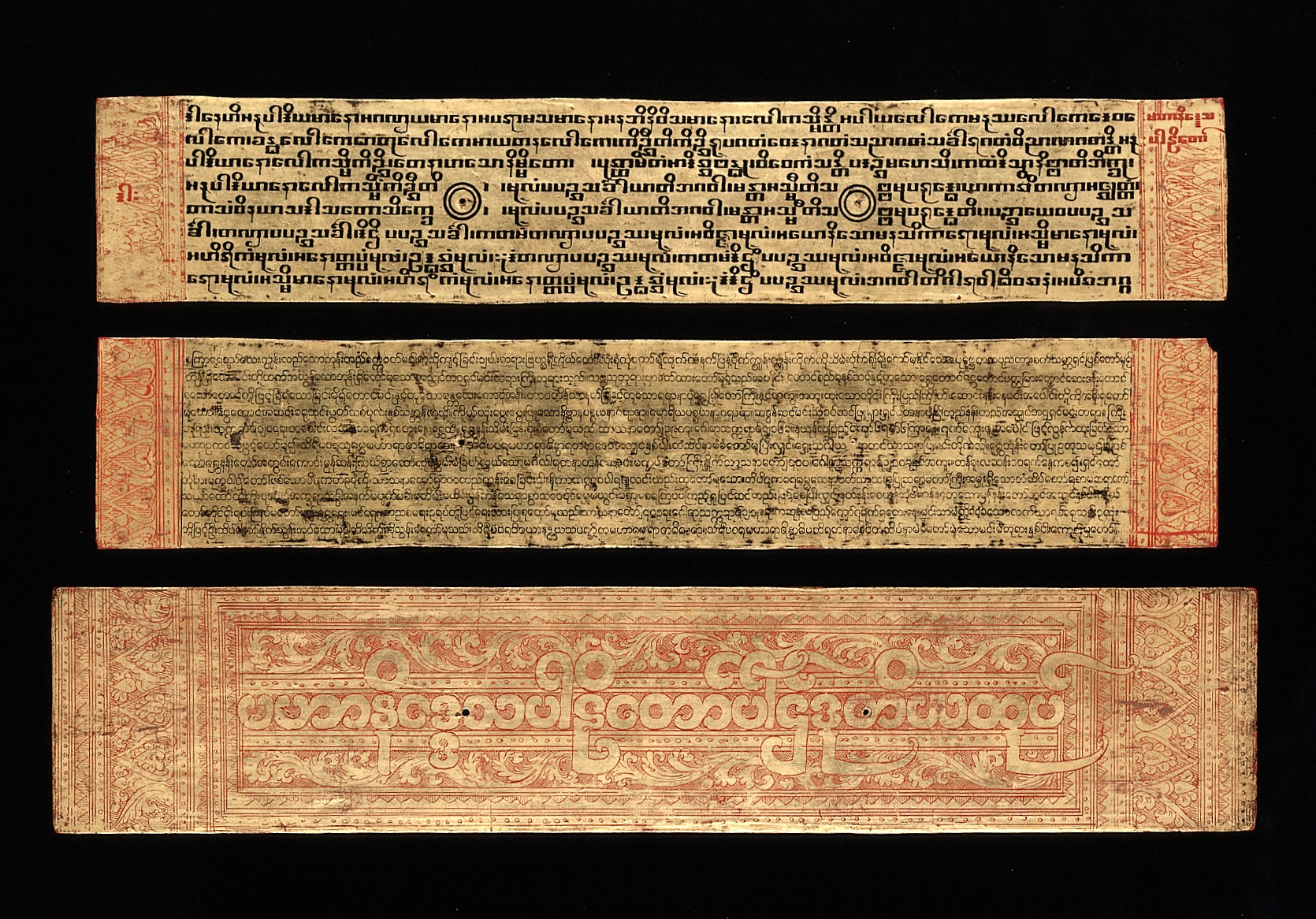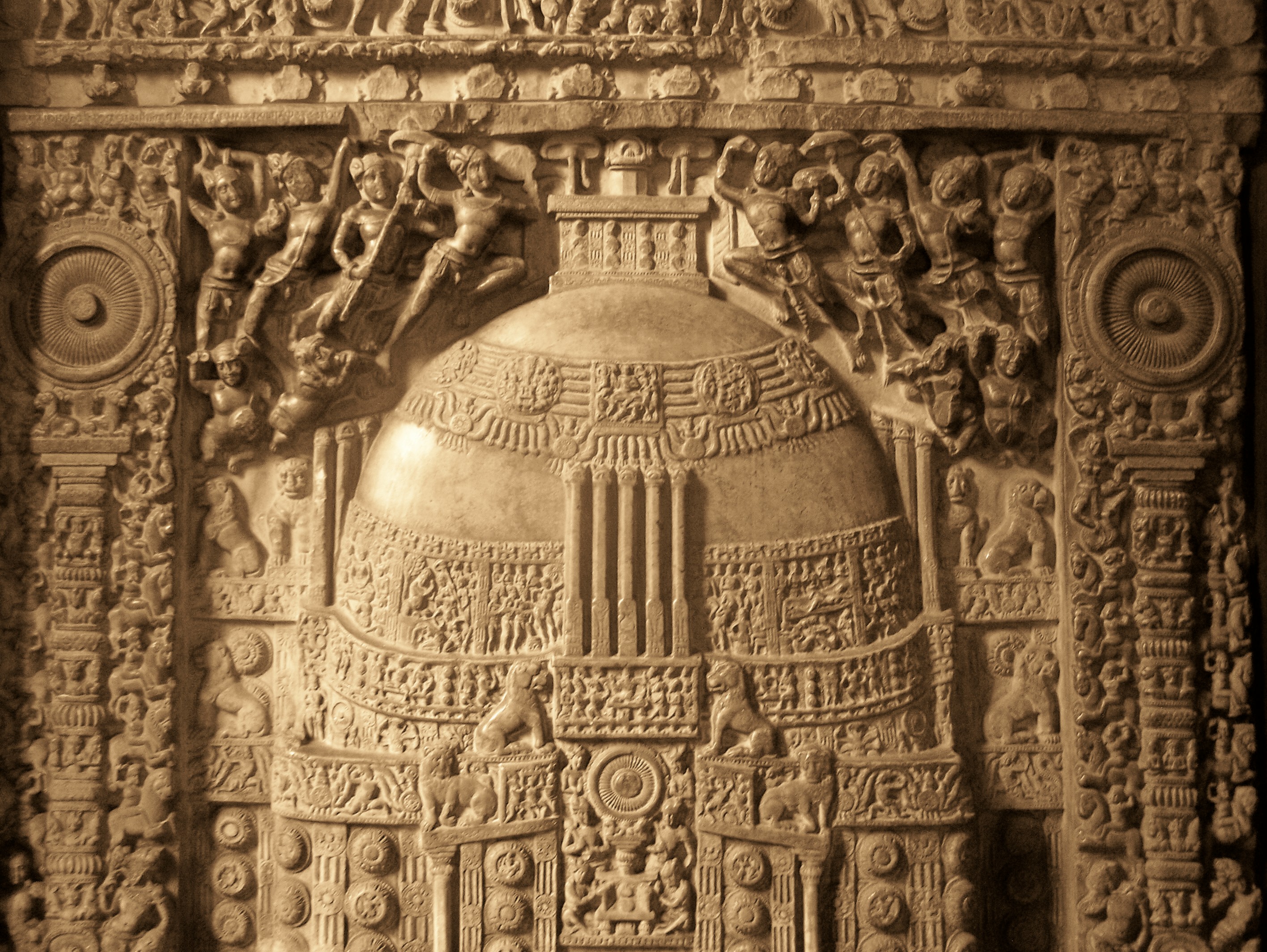|
Svabhava
Svabhava (, svabhńĀva; , sabhńĀva; ; ; ) literally means "own-being" or "own-becoming". It is the intrinsic nature, essential nature or essence of beings. The concept and term ''svabhńĀva'' are frequently encountered in Hindu and Buddhist traditions such as Advaita Vedanta (e.g. in the '' AvadhŇęta GńętńĀ''), MahńĀyńĀna Buddhism (e.g. in the '' RatnagotravibhńĀga''), Vaishnavism (e.g., the writings of Ramanuja) and Dzogchen (e.g. in the seventeen tantras). In the nondual Advaita VedńĀnta yoga text, ''AvadhŇęta GńętńĀ'', Brahman (in the Upanishadic denotation) is the ''svabhńĀva''. In the MahńĀyńĀna Buddhadharma tradition(s) it is one of a suite of terms employed to denote the Buddha-nature, such as "''gotra''". Hindu philosophy The term first appears in the Shvetashvatara Upanishad, as a possible first cause (''jagatkńĀraŠĻáa'').Ramkrishna Bhattacharya, ''SvabhńĀvavada'' and the CńĀrvńĀka/LokńĀyata: A Historical Overview There also seems to have been an Indian philosophical po ... [...More Info...] [...Related Items...] OR: [Wikipedia] [Google] [Baidu] [Amazon] |
Mahayana
MahńĀyńĀna ( ; , , ; ) is a term for a broad group of Buddhist traditions, Buddhist texts#MahńĀyńĀna texts, texts, Buddhist philosophy, philosophies, and practices developed in ancient India ( onwards). It is considered one of the three main existing branches of Buddhism, the others being TheravńĀda and VajrayńĀna.Harvey (2013), p. 189. MahńĀyńĀna accepts the main scriptures and teachings of Early Buddhist schools, early Buddhism but also recognizes various doctrines and texts that are not accepted by Theravada Buddhism as original. These include the MahńĀyńĀna sŇętras and their emphasis on the ''bodhisattva'' path and Prajnaparamita, ''Praj√ĪńĀpńĀramitńĀ''. VajrayńĀna or Mantra traditions are a subset of MahńĀyńĀna which makes use of numerous Tantra, tantric methods VajrayńĀnists consider to help achieve Buddhahood. MahńĀyńĀna also refers to the path of the bodhisattva striving to become a fully awakened Buddha for the benefit of all sentience, sentient beings, and is thus also ... [...More Info...] [...Related Items...] OR: [Wikipedia] [Google] [Baidu] [Amazon] |
VaibhńĀŠĻ£ika
SarvńĀstivńĀda-VaibhńĀŠĻ£ika () or simply VaibhńĀŠĻ£ika () is an ancient Buddhist tradition of Abhidharma (scholastic Buddhist philosophy), which was very influential in north India, especially Kashmir.Westerhoff 2018, pp. 60‚Äď61. In various texts, they referred to their tradition as ''YuktavńĀda'' (the doctrine of logic), and another name for them was ''HetuvńĀda''.Dhammajoti (2009) pp. 56, 164. The VaibhńĀŠĻ£ika school was an influential subgroup of the larger SarvńĀstivńĀda school. They were distinguished from other SarvńĀstivńĀda sub-schools like the SautrńĀntika and the "Western Masters" of Gandhara and Bactria by their orthodox adherence to the doctrines found in the '' MahńĀvibhńĀŠĻ£a,'' from which their name is derived (''VaibhńĀŠĻ£a'' is a ''vŠĻõddhi'' derivative of ''vibhńĀŠĻ£a,'' meaning "related to the ''vibhńĀŠĻ£a''). VaibhńĀŠĻ£ika thought significantly influenced the Buddhist philosophy of all major Mahayana Buddhist schools of thought and also influenced the later ... [...More Info...] [...Related Items...] OR: [Wikipedia] [Google] [Baidu] [Amazon] |
TheravńĀda Abhidhamma
The Theravada Abhidhamma tradition, also known as the Abhidhamma Method, refers to a scholastic systematization of the TheravńĀda school's understanding of the highest Buddhist teachings ( Abhidhamma). These teachings are traditionally believed to have been taught by the Buddha, though modern scholars date the texts of the ''Abhidhamma PiŠĻ≠aka'' to the 3rd century BCE. TheravńĀda traditionally sees itself as the ''vibhajjavńĀda'' ("the teaching of analysis"), which reflects the analytical (''vibhajjati'') method used by the Buddha and early Buddhists to investigate the nature of the person and other phenomena. According to Bhikkhu Bodhi, a modern TheravńĀda scholar, the Abhidhamma is "simultaneously a philosophy, a psychology and an ethics, all integrated into the framework of a program for liberation."Bodhi (2000), p. 3. There are different textual layers of Abhidhamma literature. The earliest Abhidhamma works are found in the Pali Canon. Then there are exegetical works whi ... [...More Info...] [...Related Items...] OR: [Wikipedia] [Google] [Baidu] [Amazon] |
Abhidharma
The Abhidharma are a collection of Buddhist texts dating from the 3rd century BCE onwards, which contain detailed scholastic presentations of doctrinal material appearing in the canonical Buddhist scriptures and commentaries. It also refers to the scholastic method itself, as well as the field of knowledge that this method is said to study. Bhikkhu Bodhi calls it "an abstract and highly technical systemization of the uddhistdoctrine," which is "simultaneously a philosophy, a psychology and an ethics, all integrated into the framework of a program for liberation." According to Peter Harvey, the Abhidharma method seeks "to avoid the inexactitudes of colloquial conventional language, as is sometimes found in the Suttas, and state everything in psycho-philosophically exact language." In this sense, it is an attempt to best express the Buddhist view of " ultimate reality" (''paramńĀrtha-satya''). There are different types of Abhidharma literature. The early canonical Abhidharma ... [...More Info...] [...Related Items...] OR: [Wikipedia] [Google] [Baidu] [Amazon] |
Buddha-nature
In Buddhist philosophy and soteriology, Buddha-nature ( Chinese: , Japanese: , , Sanskrit: ) is the innate potential for all sentient beings to become a Buddha or the fact that all sentient beings already have a pure Buddha-essence within themselves.Heng-Ching ShihThe Significance Of 'Tathagatagarbha' ‚Äď A Positive Expression Of 'Sunyata'/ref> "Buddha-nature" is the common English translation for several related MahńĀyńĀna Buddhism, Buddhist terms, most notably ''tathńĀgatagarbha'' and ''buddhadhńĀtu'', but also ''sugatagarbha,'' and ''buddhagarbha''. ''TathńĀgatagarbha'' can mean "the womb" or "embryo" (''garbha'') of the "thus-gone one" (''Tathagata, tathńĀgata''), and can also mean "containing a ''tathńĀgata''"''. BuddhadhńĀtu'' can mean "buddha-element", "buddha-realm", or "buddha-substrate". Buddha-nature has a wide range of (sometimes conflicting) meanings in Indian Buddhism and later in East Asian Buddhism, East Asian and Tibetan Buddhism, Tibetan Buddhist literatur ... [...More Info...] [...Related Items...] OR: [Wikipedia] [Google] [Baidu] [Amazon] |
Pierre Teilhard De Chardin
Pierre Teilhard de Chardin (; 1 May 1881 ‚Äď 10 April 1955) was a French Jesuit, Catholic priest, scientist, palaeontologist, theologian, and teacher. He was Darwinian and progressive in outlook and the author of several influential theological and philosophical books. His mainstream scientific achievements include his palaeontological research in China, taking part in the discovery of the significant Peking Man fossils from the Zhoukoudian cave complex near Beijing. His more speculative ideas, sometimes criticized as pseudoscientific, have included a vitalist conception of the Omega Point. Along with Vladimir Vernadsky, they also contributed to the development of the concept of a noosphere. In 1962, the Holy Office condemned several of Teilhard's works based on their alleged ambiguities and doctrinal errors. Some eminent Catholic figures, including Pope Benedict XVI and Pope Francis, have made positive comments on some of his ideas since. The response to his writings by ... [...More Info...] [...Related Items...] OR: [Wikipedia] [Google] [Baidu] [Amazon] |
Dharma
Dharma (; , ) is a key concept in various Indian religions. The term ''dharma'' does not have a single, clear Untranslatability, translation and conveys a multifaceted idea. Etymologically, it comes from the Sanskrit ''dhr-'', meaning ''to hold'' or ''to support'', thus referring to law that sustains things‚ÄĒfrom one's life to society, and to the Universe at large. In its most commonly used sense, dharma refers to an individual's moral responsibilities or duties; the dharma of a farmer differs from the dharma of a soldier, thus making the concept of dharma a varying dynamic. As with the other components of the PuruŠĻ£ńĀrtha, the concept of ''dharma'' is pan-Indian. The antonym of dharma is ''adharma''. In Hinduism, ''dharma'' denotes behaviour that is considered to be in accord with ''ŠĻöta''‚ÄĒthe "order and custom" that makes life and universe possible. This includes duties, rights, laws, conduct, virtues and "right way of living" according to the stage of life or social posi ... [...More Info...] [...Related Items...] OR: [Wikipedia] [Google] [Baidu] [Amazon] |
PratńętyasamutpńĀda
''PratńętyasamutpńĀda'' (Sanskrit: ŗ§™ŗ•ćŗ§įŗ§§ŗ•Äŗ§§ŗ•ćŗ§Įŗ§łŗ§ģŗ•Āŗ§§ŗ•ćŗ§™ŗ§ĺŗ§¶, PńĀli: ''paŠĻ≠iccasamuppńĀda''), commonly translated as dependent origination, or dependent arising, is a key doctrine in Buddhism shared by all schools of Buddhism. It states that all dharmas (phenomena) arise in dependence upon other dharmas: "if this exists, that exists; if this ceases to exist, that also ceases to exist". The basic principle is that all things (dharmas, phenomena, principles) arise in dependence upon other things. The doctrine includes depictions of the arising of suffering (''anuloma-paŠĻ≠iccasamuppńĀda'', "with the grain", forward conditionality) and depictions of how the chain can be reversed (''paŠĻ≠iloma-paŠĻ≠iccasamuppńĀda'', "against the grain", reverse conditionality).Fuller, Paul (2004). ''The Notion of Ditthi in Theravada Buddhism: The Point of View.'' p. 65. Routledge.Harvey, Peter. ''The Conditioned Co-arising of Mental and Bodily Processes within Life and Betw ... [...More Info...] [...Related Items...] OR: [Wikipedia] [Google] [Baidu] [Amazon] |
Milinda Panha
The ''Milindapa√Īha'' () is a Buddhist text which dates from sometime between 100 BC and 200 AD. It purports to record a dialogue between the Indian Buddhist sage NńĀgasena, and the 2nd century BC Indo-Greek king Menander I (Pali: ''Milinda''). The ''Milindapa√ĪhńĀ'' is regarded as canonical in Burmese Buddhism, included as part of the book of ''Khuddaka NikńĀya''. An abridged version is included as part of Chinese MahńĀyńĀna translations of the canon. The ''Milindapa√Īha'' is not regarded as canonical by Thai or Sri Lankan Buddhism, however, despite the surviving TheravńĀda text being in Sinhalese script. The Chinese text titled the Monk NńĀgasena Sutra corresponds to the first three chapters of the Milindapa√Īha. It was translated sometime during the Eastern Jin dynasty (317‚Äď420). History It is generally accepted by scholars that the work is composite, with additions made over some time. In support of this, it is noted that the Chinese versions of the work are sub ... [...More Info...] [...Related Items...] OR: [Wikipedia] [Google] [Baidu] [Amazon] |
PńĀli Canon
The PńĀŠł∑i Canon is the standard collection of scriptures in the Theravada Buddhism, Buddhist tradition, as preserved in the PńĀli language. It is the most complete extant Early Buddhist texts, early Buddhist canon. It derives mainly from the Tamrashatiya school. According to Buddhist tradition, during the First Buddhist Council, three months after the parinibbana of Gautama Buddha in Rajgir, Ananda recited the Sutta PiŠĻ≠aka, Sutta Pitaka, and Upali recited the Vinaya PiŠĻ≠aka, Vinaya Pitaka. The Arhats present accepted the recitations, and henceforth, the teachings were preserved orally by the Sangha. The Tipitaka that was transmitted to Sri Lanka during the reign of King Asoka was initially preserved orally and later written down on palm leaves during the Fourth Buddhist Council in 29 BC, approximately 454 years after the death of Gautama Buddha. The claim that the texts were "spoken by the Buddha" is meant in this non-literal sense. The existence of the BhńĀŠĻáaka tradi ... [...More Info...] [...Related Items...] OR: [Wikipedia] [Google] [Baidu] [Amazon] |
ŇörńęmńĀlńĀdevńę SiŠĻÉhanńĀda SŇętra
The ''ŇörńęmńĀlńĀdevńę SiŠĻÉhanńĀda SŇętra'' (, '' of Queen ŇörńęmńĀlńĀ'') is one of the main early MahńĀyńĀna Buddhist texts belonging to the TathńĀgatagarbha sŇętras that teaches the doctrines of Buddha-nature and "One Vehicle" through the words of the Indian queen ŇörńęmńĀlńĀ. After its composition, this text became the primary scriptural advocate in India for the universal potentiality of Buddhahood. History Brian Edward Brown, a specialist in Buddha-nature doctrines, writes that the composition of the ''ŇörńęmńĀlńĀdevńę SiŠĻÉhanńĀda SŇętra'' occurred during the ń™kŠĻ£vńĀku Dynasty in the 3rd century CE as a product of the Caitika schools of the MahńĀsńĀŠĻÉghikas. Alex Wayman has outlined eleven points of complete agreement between the MahńĀsńĀŠĻÉghikas and the ''ŇörńęmńĀlńĀ'', along with four major arguments for this association. Anthony Barber also associates the earlier development of the '' TathńĀgatagarbha SŇętra'' with the MahńĀsńĀŠĻÉghikas, and concludes that the M ... [...More Info...] [...Related Items...] OR: [Wikipedia] [Google] [Baidu] [Amazon] |










